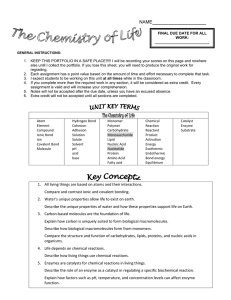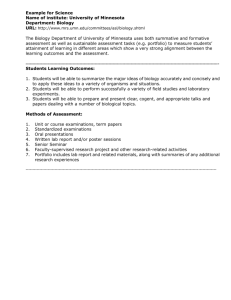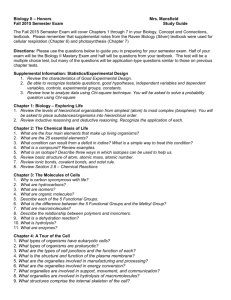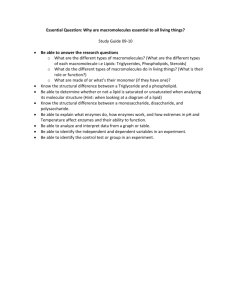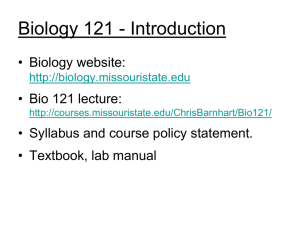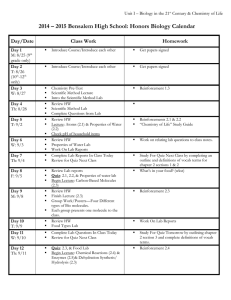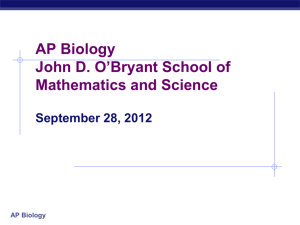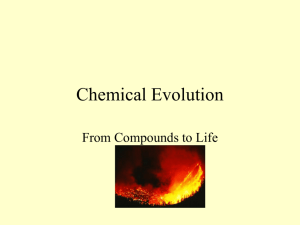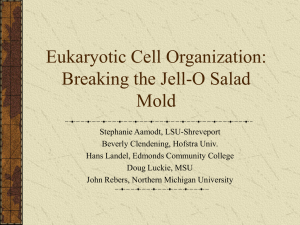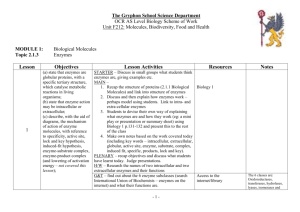BIOLOGY: Requirements UNIT 1: The Nature of Life Big Ideas Ch. 1
advertisement
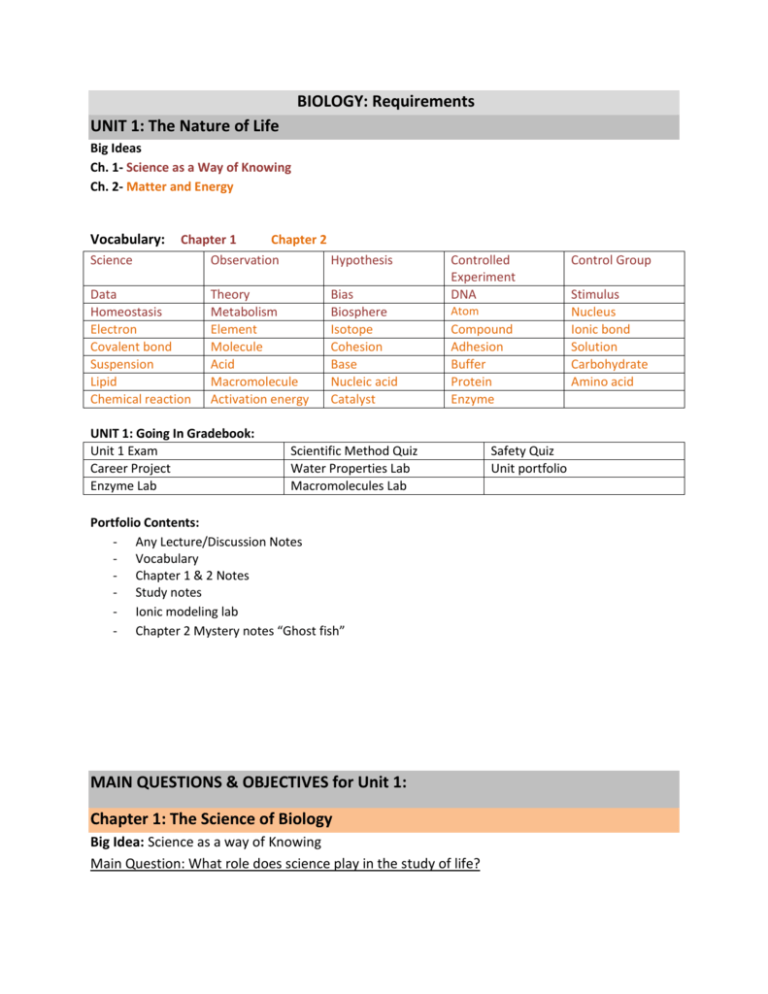
BIOLOGY: Requirements UNIT 1: The Nature of Life Big Ideas Ch. 1- Science as a Way of Knowing Ch. 2- Matter and Energy Vocabulary: Science Chapter 1 Chapter 2 Observation Hypothesis Data Homeostasis Electron Covalent bond Suspension Lipid Chemical reaction Theory Metabolism Element Molecule Acid Macromolecule Activation energy UNIT 1: Going In Gradebook: Unit 1 Exam Career Project Enzyme Lab Bias Biosphere Isotope Cohesion Base Nucleic acid Catalyst Controlled Experiment DNA Atom Compound Adhesion Buffer Protein Enzyme Scientific Method Quiz Water Properties Lab Macromolecules Lab Portfolio Contents: - Any Lecture/Discussion Notes - Vocabulary - Chapter 1 & 2 Notes - Study notes - Ionic modeling lab - Chapter 2 Mystery notes “Ghost fish” MAIN QUESTIONS & OBJECTIVES for Unit 1: Chapter 1: The Science of Biology Big Idea: Science as a way of Knowing Main Question: What role does science play in the study of life? Safety Quiz Unit portfolio Control Group Stimulus Nucleus Ionic bond Solution Carbohydrate Amino acid Chapter 1.1 What is Science? How do we find explanations for events in the natural world? Objectives: State the goals of science Describe the steps used in scientific method Chapter 1.2: Science in Context How do the scientific community and society influence the process of science? Objectives: o Explain how scientific attitudes generate new ideas o Describe the importance of peer review o Explain what a scientific theory is. o Explain the relationship between science and society Chapter 1.3: Studying Life What is Biology? Objectives: o o o o List the characteristics of living things Identify the central themes of biology. Explain how life can be studied at different levels. Discuss the importance of a universal system of measurement Chapter 2: The Chemistry of Life Big Idea: Matter and Energy Main Question: What are the basic chemical principles that affect living things? Chapter 2.1: The Nature of Matter What is the matter in organisms made of? Objectives: o o o o Identify the three subatomic particles found in atoms Explain how all of the isotopes of an element are similar and how they are different Explain how compounds are different from their component elements Describe the two main types of chemical bonds Chapter 2.2: Properties of Water Why are the properties of water important for organisms? Objectives: o o o Discuss the unique properties of water Differentiate between solutions and suspensions Explain what acidic solutions and basic solutions are Chapter 2.3: Carbon Compounds How do organisms use different types of carbon compounds? Objectives: o o Describe the unique qualities of carbon Describe the structures and functions of each of the four groups of macromolecules Chapter 2.4: Chemical Reactions and Enzymes How do chemicals combine and break apart inside living things? Objectives: o o o Explain how chemical reactions affect chemical bonds. Describe how energy changes affect how easily a chemical reaction will occur Explain why enzymes are important to living things



